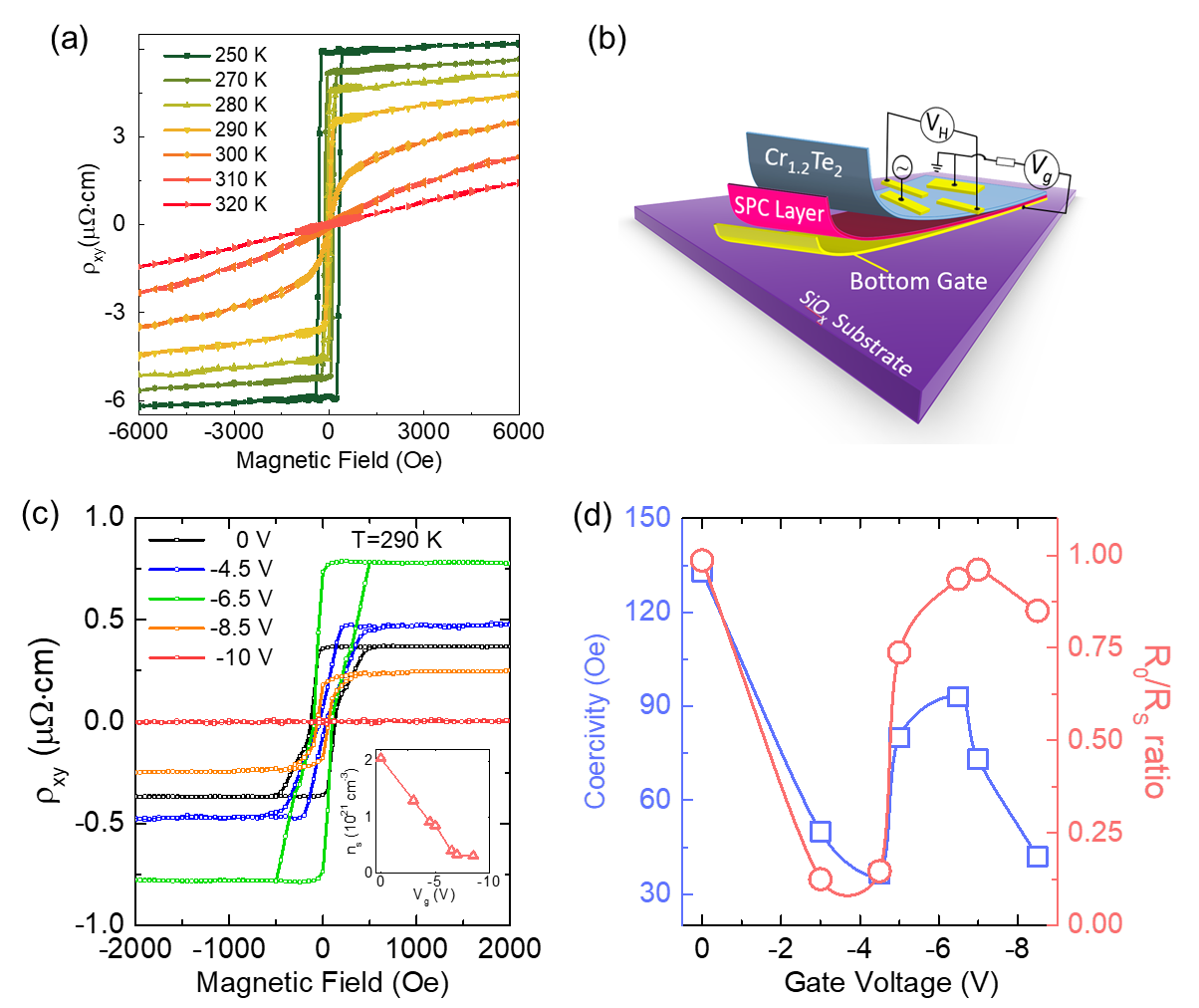In recent years, the emergence of two-dimensional materials has provided new opportunities for the development of low-power electronic devices, and the search for room-temperature two-dimensional magnetic materials and the realization of electrical control have become the frontier of international research. Due to the fact that antiferromagnetic materials are much faster than ferromagnetic materials in ultrafast magnetic dynamics and are not easily disturbed by external magnetic fields, spintronics based on antiferromagnetic materials has become a hot research topic, so it is of great significance to realize the room temperature electrically controlled ferromagnetic to antiferromagnetic phase transition in two-dimensional magnetic materials. The two-dimensional CraTeb material exhibits room-temperature magnetism and room-temperature near-square hysteresis loops, so it provides an ideal platform for studying the electrically controlled room-temperature magnetism at room temperature, and thus provides a physical basis for the design of room-temperature spintronic devices. In cooperation with other domestic and foreign research teams, the low-dimensional magnetism and spintronic devices research group of Hefei University of Technology has realized the magnetic phase transition from room temperature electrically controlled ferromagnetism to antiferromagnetism for the first time in the two-dimensional material Cr1.2Te2, and the ferromagnetic state of the system also has a near-square hysteresis loop at room temperature, so it has great application prospects. This work was published on October 17, 2023, in the journal "Physical Review Letters".
Figure 1(a) shows the temperature dependent AHE curves recorded above 250 K. These curves became absent at around 320 K, confirming the high Curie temperature of Cr1.2Te2. Figure 1(b) shows a schematic of a solid protonic gate device, in which a voltage is applied between the Pt gate electrode (under the solid protonic electrolyte) and the Cr1.2Te2 nanoflake to drive protons into the nanoflake. Figure 1(c) shows the protonic gate-voltage dependent AHE curves of one typical device at 290 K. The AHE firstly increased and reached up to 7.2 cm at Vg= -6.5 V, a value 4.5 times higher than that of the pristine material (1.6 cm). It then sharply declined, and the hysteresis loop vanished at Vg = -10 V. The figure inset shows the gate voltage dependent hole density, which decreases with increasing proton intercalation. Figure 1(d) shows the gate-voltage dependent coercivity and R0/RS ratio at 290 K. The coercivity initially falls to 36.5 Oe, (27% of the coercivity at Vg = 0 V), then reaches a sub-peak at Vg = -6.5 V before decreasing to 42 Oe at Vg= -8.5 V. The evolution of the R0/RS ratio shows a similar trend to the evolution of coercivity which drops to around 0.1 at Vg = -3 V and -4.5 V and remains around 1 under other gate voltages. The tunability of the magnetic properties and phase in room temperature magnetic vdW Cr1.2Te2 is a significant step towards practical spintronic devices.

Figure 1 Room-temperature magnetic phase transition in an electrically-tuned van der Waals ferromagnet Cr1.2Te2.
Hefei University of Technology is the first affiliation of this work. Professor Wang Lan from Hefei University of Technology, Researcher Zheng Guolin from the High Magnetic Field Science Center of the Chinese Academy of Sciences, Professor Xiang Bin from the University of Science and Technology of China, and Professor Zhao Yujun from South China University of Technology are the co-corresponding authors of the paper. The research was funded by the National Science Foundation of China and the construction fund of Hefei University of Technology for the introduction of talents.
Link to the original research paper: https://journals.aps.org/prl/abstract/10.1103/PhysRevLett.131.166703.